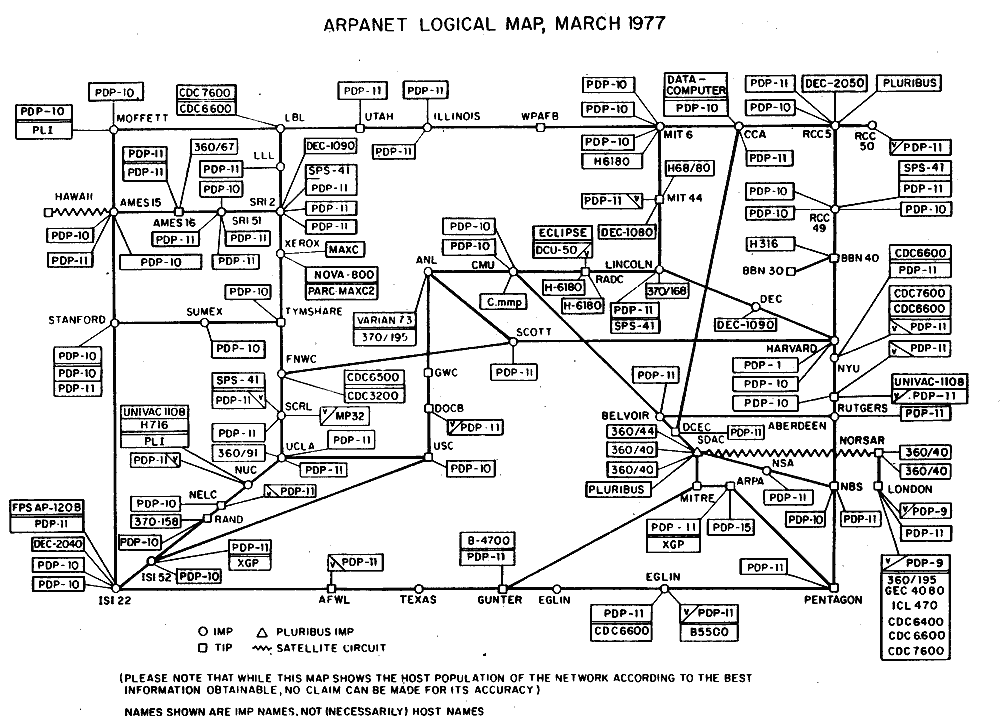In today’s world, we cannot imagine a single day without the internet. From online shopping to social media, we are highly dependent on the internet. Also, these days every device is born smart and has the capability to link over a network using the internet.
From smartwatches to smart televisions and smartphones, more and more devices are becoming capable of connecting to the internet to make our lives easier. When it comes to the internet it is born from what we know as ARPANET. The internet is available for everyone and not controlled by a single entity. However, it was not the same 5 decades ago when ARPANET was introduced.
In this article, we will try to understand what ARPANET is and how the internet was born out of it.
What is ARPANET?
ARPANET stands for Advanced Research Projects Agency Network and it is the predecessor of the internet. It was a packet-switching network that started using protocols like TCP/IP, which are now utilized by the internet itself.
Advanced Research Project Agency (ARPA) developed ARPANET in 1969 for the United States Department of Defence. Also, the US government had full control over the ARPA network at that time. The credit for the development of the ARPA network goes to four individuals, namely Paul Baran, Donald Davies, Leonard Kleinrock, and Lawrence Roberts.
Development History of ARPANET
In the early stages of ARPANET, it used the Network Control Program. However, with the development of TCP/IP in 1983, ARPANET adopted both these protocols for its network connections. The initial idea was to build a system that could communicate and share resources among different computers over a network. The intent was to allow scientists from different institutes working on a common project to communicate faster.
ARPA network's idea is similar to the telephone. However, it sends information in small units called packets from the source to the destination by establishing an end-to-end communication. Today, it is quite easy to set up end-to-end communication between two systems. But in the early stages of networks, this was the most difficult task. In 1969 when ARPANET was under development, it has four nodes connected over a single network.
All four nodes were located at different universities in the USA, which were the University of California, Los Angeles (A Honeywell DDP 516 computer), Stanford Research Institute(An SDS-940 computer), University of California, Santa Barbara (An IBM 360/75), and University of Utah (A DEC PDP-10). [caption id="attachment_3230" align="aligncenter" width="1000"]
 Picture Credit - Wikipedia[/caption] After the rapid development of networks and protocols, various new networks emerged. In 1981,
National Science Foundation
(NSF) funded the Computer Science Network (CSNET) and expanded access to the ARPANET. Also, by 1982, protocols like TCP/IP were also introduced in the ARPANET network stack.
Picture Credit - Wikipedia[/caption] After the rapid development of networks and protocols, various new networks emerged. In 1981,
National Science Foundation
(NSF) funded the Computer Science Network (CSNET) and expanded access to the ARPANET. Also, by 1982, protocols like TCP/IP were also introduced in the ARPANET network stack.
In 1990, when the government authorities stop funding the ARPANET project, telecommunication industries decided to take it to the next level. They funded it for commercial purposes and made it a worldwide network so everyone could use it.
Rules for Using ARPNET When it Was Funded by the US Government
ARPANET was a project of the US Department of Defence, so there were some strict rules for operating it. Also, all the networks in it were ambiguous, and by 1981, more than 213 hosts were joined into the network. As a result, identifying each network became a hectic task. So, the US Department of Defence set some rules and restrictions for using the ARPANET that are as follows:
- The use of ARPANET for any non-government purposes is illegal.
- Friendly messages sent over the ARPA network would not consider harmful.
- Strict restriction on sending commercial or political emails over ARPANET.
Birth of the Internet from ARPANET
Initially, only the Government and Defence authorities of the USA knew about ARPANET, and general people were not aware of it. On 1 st July 1957, DCA (Defence Communication Agency) took control of this project, and all the funding was done under the military expenses. By 1975, more than 57 systems were linked to this network.
With the rapid development of ARPANET, more and more people started taking interest in it. Each year, new systems linked to the network; by now only the authorized developers were allowed to connect to this network. This rapid growth was a threat to national security, and there was no proper framework to control the overall network; that’s why DCA imposed some strict rules on the use of ARPANET.
In early 1980, the network was opened for both authorized and unauthorized users, and it was divided into two networks - ARPANET and MILNET. While ARPANET was used for research purposes, MILNET was reserved for military usage. The privatization of ARPANET by DCA was a bold move. In 1984, NSF (National Science Foundation) started a new network and named it NFTNET.
By 1988, NSF had started to use the ARPA network for commercial purposes. In 1990, the government decommissioned the project, and it became a distributed network that anyone could join.
To Sum it Up
ARPANET played a major role in the emergence of the internet. Today, the web that has become an inseparable part of our life, and the credit for its existence directly goes to the ARPA network. We hope that this article provided you with all the essential information about ARPANET including its development history.



![What is TCP/IP Model? [Definition, Working, & Layers]](/media/new_post_images/TCP_IP_Model.webp)

Leave a Comment on this Post